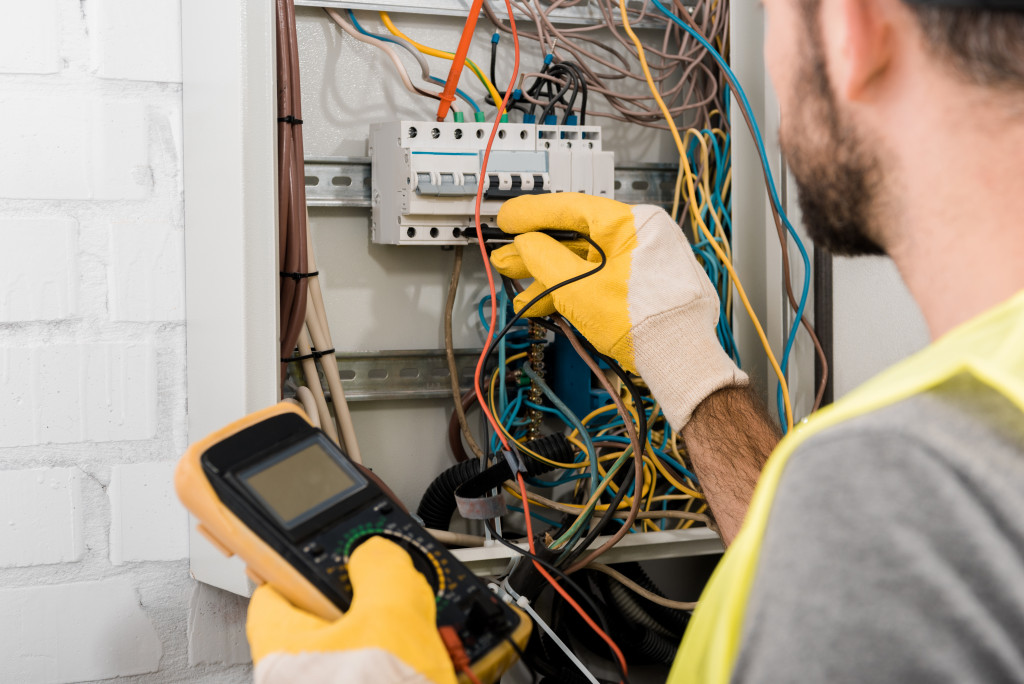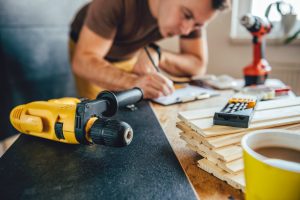- Water damage in your home can cause mold growth, respiratory problems, allergies, and furniture damage.
- Electrical hazards from faulty wiring or exposed wires can cause electrocution and fire.
- Carbon monoxide poisoning from incomplete combustion of fuels can lead to death. Place carbon monoxide detectors in sleeping areas.
- Lead-based paint in homes built before 1978 can cause developmental problems, learning disabilities, and other issues.
- Structural damage to foundations, roofs, ceilings, and walls can pose severe risks to children’s safety.
As a responsible parent, you want to keep your children safe from all possible dangers, especially in your own home, where they’re supposed to feel most protected. However, some structural hazards may pose a risk to your children’s safety if left unchecked.
These hazards can range from minor to severe, but they all require your attention as a homeowner to prevent them from turning into a disaster. This blog will discuss the most common structural hazards that can put your children in danger, along with some tips on how to minimize their risks.
Water Damage
Water damage is one of the most common structural hazards that homeowners face. Water damage can lead to mold growth, which can cause respiratory problems, allergies, and other health issues for your children. It can be caused by many factors, such as overflowing toilets, broken pipes, and leaky roofs. But flooding is arguably the most serious cause of water damage. Flooding can damage walls, floors, and even furniture in your home.
When this happens, contact professional flood restoration companies right away. A flood restoration company can assess the damage and provide a plan for repairing your home to pre-flood condition. Additionally, they may recommend mold removal and structural repairs to ensure that your family is safe from the dangers of water damage.
Electrical Hazards

Electrical hazards are often overlooked but can be extremely dangerous for children. Faulty wiring, outdated electrical systems, and exposed wires can lead to electrocution, electrical fires, and other hazards.
Make sure to have your electrical system inspected by a professional electrician, especially if your home is more than 20 years old. Keep all electrical appliances and cords out of children’s reach, and teach them never to touch an electrical outlet or appliance with wet hands.
Carbon Monoxide Poisoning
Carbon monoxide is a colorless and odorless gas that can cause serious health problems, including death. It’s produced by incomplete combustion of fuels like gas, oil, and wood. Make sure to install carbon monoxide detectors in all sleeping areas and near fuel-burning appliances. Also, never use portable fuel-burning devices inside your home or garage.
Lead Paint
Homes built before 1978 may contain lead-based paint, which can be dangerous for children if they ingest any flaking or chipping paint. Lead poisoning can lead to developmental delays, learning disabilities, and other health issues. If your home was built before 1978, have it inspected for lead-based paint by a professional.
Structural Damage
Structural damage to your home’s foundation, walls, roof, and ceiling can pose a serious risk to your children’s safety. Here’s what you need to know about damages in these areas and what you can do to prevent them:
Foundation
Foundation damage can cause walls to shift and collapse, which can injure your children. Make sure to check for cracks, bowing, and other signs of foundation damage regularly. Contact an experienced contractor if you notice any concerning issues.
Roof
Damaged roofs can lead to water leaks and mold growth, which can be hazardous to your children’s health. Inspect your roof regularly for signs of damage and leaks, and have any issues repaired right away.
Ceiling

Damaged ceilings are also dangerous as they can collapse unexpectedly. Regularly inspect the ceiling for bulges or other signs of damage, and make sure to repair them immediately.
Walls
Finally, structural damage to walls can lead to collapse or other dangers. Look out for cracks, bowing, and other signs of wear. If you notice any issues, contact a contractor right away.
By being aware of structural damage to your home’s foundation, roof, ceiling, and walls, you can keep your children safe from potential hazards.
Keeping your children safe from harm is of utmost importance. It starts with a vigilant eye for potential structural hazards in the home. From water damage to electrical hazards and carbon monoxide poisoning, many dangers can put your children at risk if left unchecked.
Inspect all areas of your home regularly for signs of damage or other issues, and contact professionals immediately if you notice any problems. By taking these steps, you can ensure your family stays safe while living in their home environment.



















